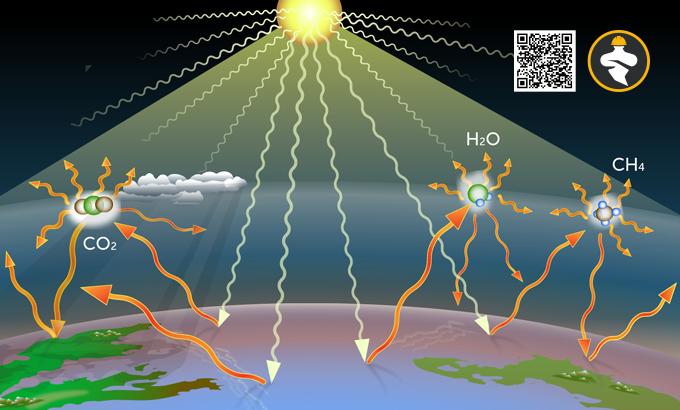Methane is a greenhouse gas with two faces. It warms the Earth’s atmosphere 28 times more powerfully than carbon dioxide. However, its absorption of high solar energy in the atmosphere modifies cloud formations, reducing its warming impact.

So, methane’s solar absorption triggers a chain reaction that lessens its total warming effect by around 30% rather than releasing additional thermal energy to the atmosphere, according to a study published on March 16 in Nature Geoscience.
“These are fascinating and important results,” says Rachael Byrom, a climate scientist from Norway’s CICERO Center for International Climate Research who was not involved in the current study. Nonetheless, she claims that “methane remains a really key factor gas that we need to target in emissions reductions.”
Humans are responsible for the majority of methane entering the atmosphere, which contributes to global warming. According to the National Oceanic and Atmospheric Administration, concentrations of the powerful greenhouse gas have increased by around 162 percent since preindustrial times.
Fossil fuel usage, livestock, rice cultivation, landfills, and biomass burning are the major sources of anthropogenic methane. Scientists are concerned that when warming causes permafrost to thaw in the Arctic, it will boost methane emissions as bacteria in the soil devour dead plant material and release the gas.
Greenhouse gases, such as methane, have the greatest impact by absorbing infrared “longwave” radiation released by the planet’s surface.
When the Earth is hit by “shortwave” radiation from the sun, it emits this longwave radiation. The majority of greenhouse gas research focuses on longwave absorption.
However, scientists are discovering that greenhouse gases, such as methane, absorb part of the sun’s shortwave energy. Because of this extra shortwave absorption, recent estimates imply that methane may contribute up to 15% more thermal energy to the atmosphere than previously anticipated.
The latest study, however, demonstrates that methane’s shortwave absorption has the opposite impact. This discovery is based on a thorough examination of the gas’s absorption at various wavelengths.
The outcome is “counterintuitive,” according to climate scientist Robert Allen of the University of California, Riverside. According to Allen and colleagues’ calculations, this occurs due to the way methane’s shortwave absorbance affects clouds in different levels of the atmosphere.
When methane absorbs shortwave radiation above three kilometers in the middle and upper troposphere, it heats the air even more, resulting in fewer clouds in that upper layer. And because methane absorbs shortwave radiation high above, less of it reaches the lower troposphere. This cools the lower troposphere, causing more clouds to form in that layer.
Because these thicker low-level clouds reflect more of the sun’s shortwave energy back into space, less of it reaches the Earth’s surface to be transformed into longwave radiation.
Meanwhile, upper-level clouds are known to absorb longwave radiation in addition to greenhouse gases. When there are fewer of these clouds, less of the longwave radiation released by Earth is absorbed in the atmosphere, and more of it escapes to space, where it does not contribute to climate change.
“You expect a warming of the climate system,” Allen adds of methane’s shortwave absorption. “However, these cloud adjustments actually outnumber the heating caused by absorption, resulting in a cooling effect.”
Allen and his colleagues used a numerical model of Earth’s climate to perform the research. Using the usual method of examining solely methane’s longwave absorbance, they determined that the gas had contributed 0.2 degrees Celsius of warming since preindustrial times, out of a total of 1.06 degrees Celsius. However, when shortwave absorbance was added, methane’s contribution to warming was reduced to roughly 0.16 degrees Celsius.
Methane, in addition to warming the earth, is predicted to enhance global precipitation due to increased evaporation of water at higher temperatures. The introduction of shortwave absorbance, however, lowered methane’s precipitation effect from an anticipated 0.3 percent increase in precipitation (based only on longwave absorbance) to an increase of around 0.18 percent.
According to Daniel Feldman, an atmospheric scientist at the Lawrence Berkeley National Laboratory in California who was not involved in the study, it will be critical to integrate methane’s shortwave impacts in future climate estimates. However, he believes that further research is needed to elucidate these consequences.
According to him, the new study examined methane’s shortwave influence using only one complete model that covered both the atmosphere and the ocean. “I’d just like to see that type of analysis done across multiple models,” she says, adding to her trust in the results.
Reference: Douglas Fox@www.sciencenews.org











